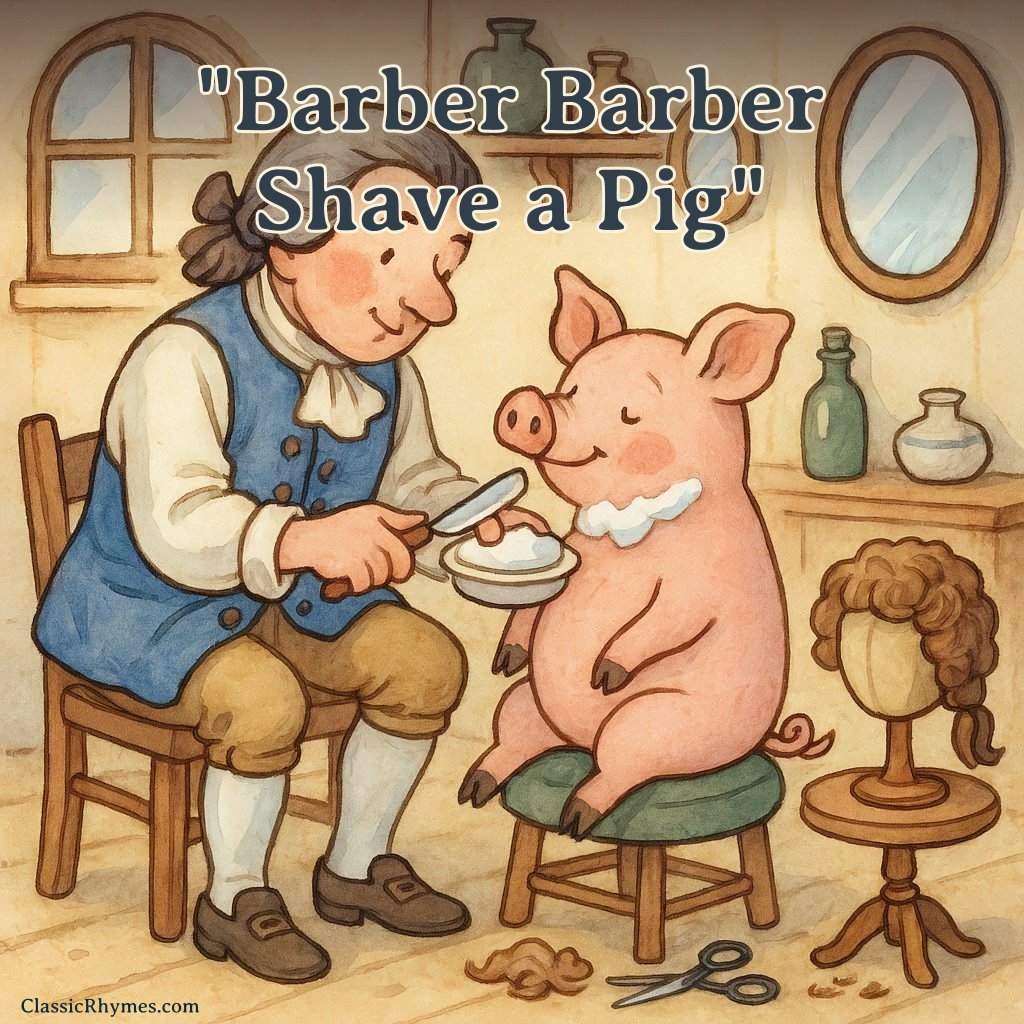Barber Barber Shave a Pig
This traditional English rhyme is characterized by its humorous absurdity. It asks a rhetorical question about the difficulty of shaving a pig to make a wig, a practice that was already silly when the rhyme originated during the era of powdered wigs.
Barber, barber, shave a pig.
How many hairs to make a wig?
Four and twenty, that’s enough.
Give the barber a pinch of snuff.
Print or Save This Rhyme
Download PDFRecitals
Listen as female British:
Listen as male American:
Listen as told in a story:
What is the Meaning of the ‘Barber Barber Shave a Pig’ Nursery Rhyme?
This is a nonsense rhyme, delighting children with its silly premise of shaving a pig to make a wig. The rhyme playfully asks how many coarse pig hairs could make a wig, giving the absurd answer “four and twenty” (24). The last line, “Give the barber a pinch of snuff,” refers to the old habit of offering snuff (powdered tobacco for sniffing) as a small thank-you, adding another comical historical detail. The rhyme is meant to amuse and entertain, not to convey a literal or moral lesson.
History and Origin of the Rhyme
Dating to at least the 18th century, this rhyme appears in early Mother Goose collections and English nursery anthologies. Barbers in old times often performed many odd jobs beyond just hairdressing, and the rhyme exaggerates these roles for humorous effect.
Time Period
Found in printed collections from the 1700s and maintained in children’s rhyme books through the Victorian era and beyond.
Historical or Cultural Notes
The mention of a barber’s odd jobs (like shaving a pig or making wigs) is a humorous nod to their varied historical duties, and “snuff” serves as a cultural marker for the era in which the rhyme was popular.
Why It Became Popular
Its short, quirky lines and farcical scenario make it easily remembered and performed, appealing to children’s love of absurdity and play with language.
Notable Variants
Occasionally, the answer line is “Then pat the pig with the powder puff.” Most versions retain the question-and-answer form and the focus on the absurdity of shaving a pig for wig hair.
Structure, Style, and Themes
Structure and Style
- Meter: Short, bouncy, repetitive for easy recitation
- Rhyme Scheme: AABB
- Line Count: Four lines
- Style Notes: Nonsense rhyme, question and answer
Themes
- Absurdity and humor
- Nonsense and wordplay
- Traditional professions
Language Notes
Phrases like “four and twenty” (old-fashioned for 24) and “pinch of snuff” reflect historical English language and customs. The question-and-answer structure is common in traditional children’s rhymes.
Moral or Lesson
No moral; the rhyme is designed for amusement and playful engagement with silly ideas.

